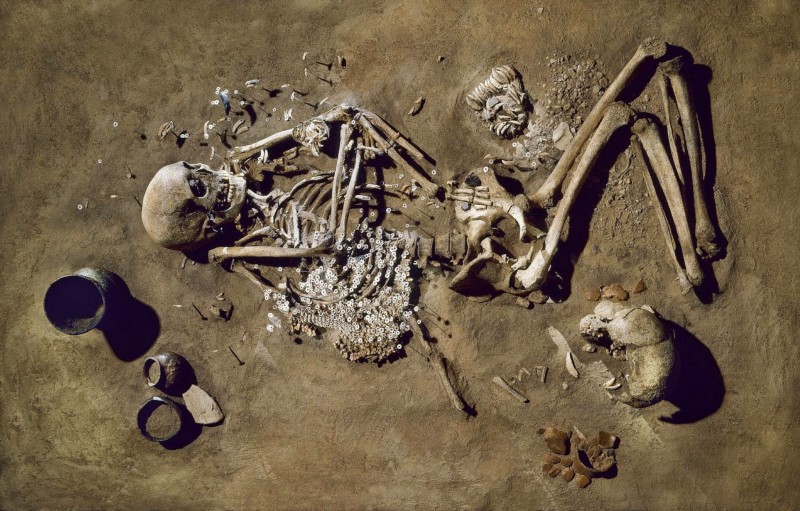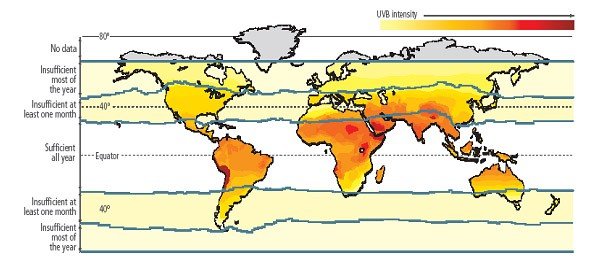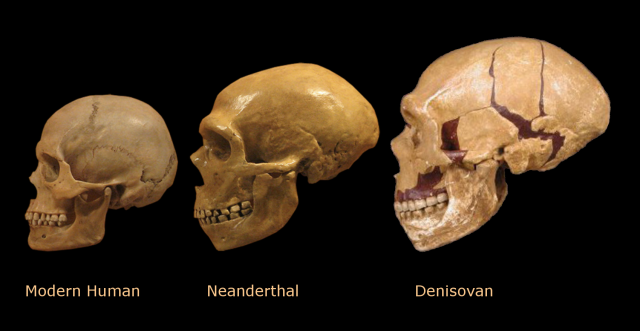What does ancient DNA say about our evolution?

The last decade has seen scientific advances in nearly every field. Some, such as our advances in space, are better known than others, such as our advances in genetic sequencing. This is understandable as people are fascinated by space their entire lives, from children looking at the sky to adults getting dizzy trying to think about the end of the universe, or what that even means?! Biology tends to be somewhat more boring for people, especially since it is often taught in a dry and boring way in school. Despite this, the advances in genetic sequencing over the last decade are something everyone can be very excited about.
It has become possible to sequence the DNA of ancient humans; we’re talking 430,000 years ancient. This is because modern sequencing methods break pieces of DNA up into small fragments, sequence them, and then piece them together using powerful computer algorithms. A problem with ancient DNA used to be that it was so degraded that it was impossible to get any good code out of it. Well things have changed.
A review published by scientists Stephanie Marciniak and George Perry in Nature this month showed how ancient genomes can give us incredible insight into human evolution and adaptation from pre-historic times to modern day humans. To date, there are over 1,100 genomes available for archaic hominins and modern humans — meaning we can genetically cover the human species from 430,000 years ago to today.
How does ancient DNA help though?
As the authors eloquently point out:
"Positive natural selection is a nonrandom, directional process resulting in frequency increases of alleles associated with phenotypes that confer relative fitness advantages in a given spatiotemporal environmental context. Although this process has shaped patterns of modern human genetic diversity in ways that are detectable in present-day genomes, for most traits, it is only by turning to ancient DNA that we can establish precisely when and where such adaptive traits emerged."
Since positive natural selection is not random, ancient DNA allows us to establish when advantageous genes were established within the human genome. The authors then further explain that this can then be combined with archaeological knowledge and carbon dating for a clearer, contextualized picture of our genetic history. For example, the expansion of humans into colder, more northern latitutes or the transition from hunter-gatherer lifestyles to agriculture which resulted in major dietary shifts would have had an impact on our genetics. Agriculture then led to increasing population density combined with a more settled lifestyle which would have led to novel exposure to pathogens and infections, and the genetics of our immune system would have been affected. The study of ancient genomes has provided some interesting insights into how these events shaped our genetics."
It’s too cold for vitamin D
It is generally thought that the UVA and UVB radiation are responsible for modern human skin colour variation. Dark pigmentation in tropical latitudes protect the skin while depigmented skin in the north and south allow higher proportions of UVB rays to penetrate the skin, which is required for vitamin D production. A lack of vitamin D is associated with cardiovascular disease, musculoskeletal disorders and other diseases yet suprisingly the authors describe a very gradual evolution of depigmentation among the expanding European population at the time. Although it is true that dietary supplements such as egg yolk, dairy products and fatty fish are also sources of vitamin D, it is unlikely ancient humans moving into northern territories ate a sufficient amount of these vitamin D sources…yet genes responsible for skin depigmentation became common in the populations much later than would be expected under normal selection pressure. For example, certain genes such as an SLC45A2 allele is important in skin pigmentation was absent across most of Europe until about 5,300–4,800 years ago.

It’s too high for us to breathe
A similar puzzle was encountered in studying the ancient genomes of South Asian humans who show a slower-than-expected physiological adaptation to the low-oxygen environment that exists in the high-altitude of the Himalayas. In the studies, scientists found that genes required for survival at these altitudes came about much later than expected, only about 1,500 years ago. One explanation for this slow dispersion of advantageous genes is that for natural selection to act, genetic variation had to first exist in these genes, and genetic variation would be caused by natural mutations….and acquisition of natural mutations is a slow process. But how did they live until then?
I can’t walk and I can’t breath
These questions give us an interesting picture of ancient humans when it comes to their health and fitness. Did expanding hominins find themselves susceptible to musculoskeletal conditions due to their lack of vitamin D production for example, or did they behaviorally change and incorporate vitamin D in their diet? Some archaeological evidence would suggest that yes, they did fish and hunt more as musculoskeletal disease is rare until the introduction of agriculture, when humans began eating substantial amounts of grains and less meat. What about the ancient humans of Southern Asia? How did they survive up the mountains? The answer may lie in the encounters modern humans (homo sapiens) had with more archaic hominins such as Neanderthals or Denisovans. This is discussed in a bit, but first the implications of agriculture!
Adaptation to agriculture
The advent of agriculture changed human history forever. Agriculture is said to have been discovered roughly 12,000 years ago in the Middle East, followed by the rest of the world later. Although food was more plentiful, the quality was not as high. For example, even today starch can comprise up to 70% of caloric intake for some agriculturalist populations, meaning many nutrients are not being consumed. In the past, this change to a high starch diet would have led to evolutionary pressures on the digestive system. The scientists of this review point out two interesting examples: lactose tolerance and increased amylase production. Surprisingly (although not surprisingly to us anymore after reading this review), the genes for lactose tolerance appear in Europe only about 5,000 years ago despite farming cultures spreading into Europe about 7,500 years ago. Once again this must have caused health issues. Perhaps before the spread of lactose tolerance, dairy processes may have reduced lactose, such as cheese-making. Interestingly, there is archaeological evidence that this did indeed occur this between 7,400 and 6,800 years ago in Europe, around the time farming culture spread but before lactose tolerance did.
Amylase is an enzyme in the saliva and pancreas used to digest starch. Modern humans have a high number of genes that produce a high level of amylase in the saliva. Even today, some populations that have a high starch diet have more amylase genes than those of us who eat less starch (at a population level, not an individual level). Amylase is one example, but it is likely that the large increase of plant based foods in the human diet created a plethora of evolutionary pressures on the human digestive system.
More friends = more infections
Although agriculture probably seemed like the best thing since sliced bread for these ancient humans, it meant populations shifted from small-group-based mobile hunter-gatherer lifestyles to permanent settlements with higher population densities in addition to closer living with animals. This would have been a difficult time for the human immune system which would be under a lot of evolutionary pressure. Unfortunately, due to the immune system’s general defence functions and the evolving nature of infections, it is difficult to pin point evolutionary changes that would have happened as a result. Despite this however, the authors suggest that with the improving power of genomics and the identification of subsets of genes with specific disease resistance effects will allow scientists to better understand the evolution of our immune system.
Borrowing from relatives
Earlier we came across the problem that the arrival of genes that protected migrating humans from certain traits (such as vitamin D deficiency, inability to live at high altitudes etc.) was later than would have been expected. It is important to remember that humans did not evolve from ancient hominin straight to homo sapien. There were various ancient hominin species such as Neanderthals and Denisovans, which were extremely similar and still part of the Homo group, but not sapiens. The presence of Denisovan and Neanderthal DNA in modern humans shows that there was a certain level of interbreeding between homo sapiens and these other hominins. In Europeans and Native Americans, 1–4% of their DNA is Neanderthal DNA, while up to 6% of indigenous Australian and some Southeast Asian DNA is Denisovan.

This mixing of genes was likely extremely important to human evolution. Importantly, Neanderthals had left Africa and migrated to Europe hundreds of thousands of years before modern humans moved out of Africa, and it was similar for Denisovans. Therefore they would have been more adapted to their environment than the incoming homo sapiens. It is likely that as homo sapiens moved out of Africa and encountered other archaic hominins and bred with them, the parts of the Neanderthal genome, for the example, which provided an advantage to living in northern latitudes would have been incorporated into the homo sapien genome. In fact, a gene known as BNC2 that is present in 70% of present-day Europeans and is involved in skin development has been shown by computational genetics to be originated from Neanderthal populations. It is highly likely that similar processes helped homo sapiens in every new environment they conquered — breeding with other hominins who were already adapted to the new environment allowed homo sapiens to acquire this adaptation rapidly.
The story continues
Despite this there were many evolutionary pressures homo sapiens had to fight themselves with no outside help. The switch to an agricultural society for example. Today we continue to evolve in various ways depending on what selective pressures are present.
One problem that still exists with ancient DNA is the geographical sparsity of samples. This is partially to do with ideal DNA-maintaining conditions in certain geographical regions, but also funding. Ideally as genomic sequencing becomes less and less expensive and more accessible, more ancient genomes covering a wider range of the world will be sequenced, giving us an even deeper insight into human evolution. To date, genomic data sets are heavily skewed towards Europe and parts of Asia.
However, advanced DNA sequencing and analysis methods are still in their relative infancy. If DNA sequencing technology continues to advance as it is, no doubt we will be in for a fascinating look into our past.
Source: Marciniak S., Perry GH. "Harnessing ancient genomes to study the history of human adaptation". 2017. Nat. Rev. Genet.
Thanks for sharing. Followed. Pls follow me
That is a very interesting post. I think it would be very useful, for the readers, to add extra references where more information could be found. In addition, I am fully convinced this will bring you more rewards ;)
Thanks in advance for your consideration.
Thank you for pointing this out, I of course meant to link the original article and will do so now, and will try to add more references in future posts!